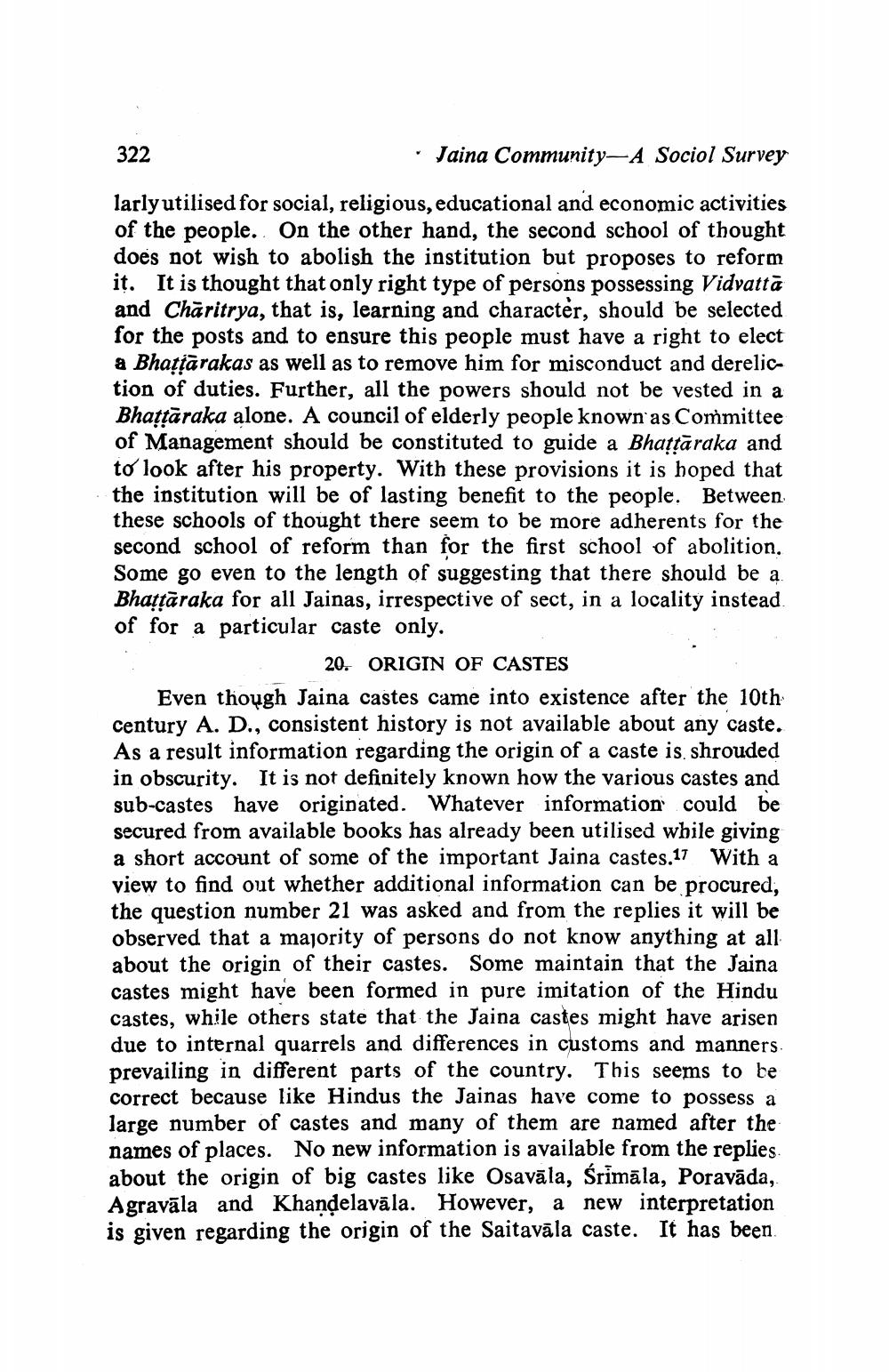________________
Jaina Community-A Sociol Survey
larly utilised for social, religious, educational and economic activities of the people. On the other hand, the second school of thought does not wish to abolish the institution but proposes to reform it. It is thought that only right type of persons possessing Vidvattā and Charitrya, that is, learning and character, should be selected for the posts and to ensure this people must have a right to elect a Bhaṭṭārakas as well as to remove him for misconduct and dereliction of duties. Further, all the powers should not be vested in a Bhaṭṭaraka alone. A council of elderly people known as Committee of Management should be constituted to guide a Bhaṭṭāraka and to look after his property. With these provisions it is hoped that the institution will be of lasting benefit to the people. Between these schools of thought there seem to be more adherents for the second school of reform than for the first school of abolition. Some go even to the length of suggesting that there should be a Bhattaraka for all Jainas, irrespective of sect, in a locality instead. of for a particular caste only.
20. ORIGIN OF CASTES
Even though Jaina castes came into existence after the 10th century A. D., consistent history is not available about any caste. As a result information regarding the origin of a caste is shrouded in obscurity. It is not definitely known how the various castes and sub-castes have originated. Whatever information could be secured from available books has already been utilised while giving a short account of some of the important Jaina castes.17 With a view to find out whether additional information can be procured, the question number 21 was asked and from the replies it will be observed that a majority of persons do not know anything at all about the origin of their castes. Some maintain that the Jaina castes might have been formed in pure imitation of the Hindu castes, while others state that the Jaina castes might have arisen due to internal quarrels and differences in customs and manners. prevailing in different parts of the country. This seems to be correct because like Hindus the Jainas have come to possess a large number of castes and many of them are named after the names of places. No new information is available from the replies. about the origin of big castes like Osavāla, Śrīmāla, Poravāda, Agravāla and Khanḍelavala. However, a new interpretation is given regarding the origin of the Saitavala caste. It has been.
322




